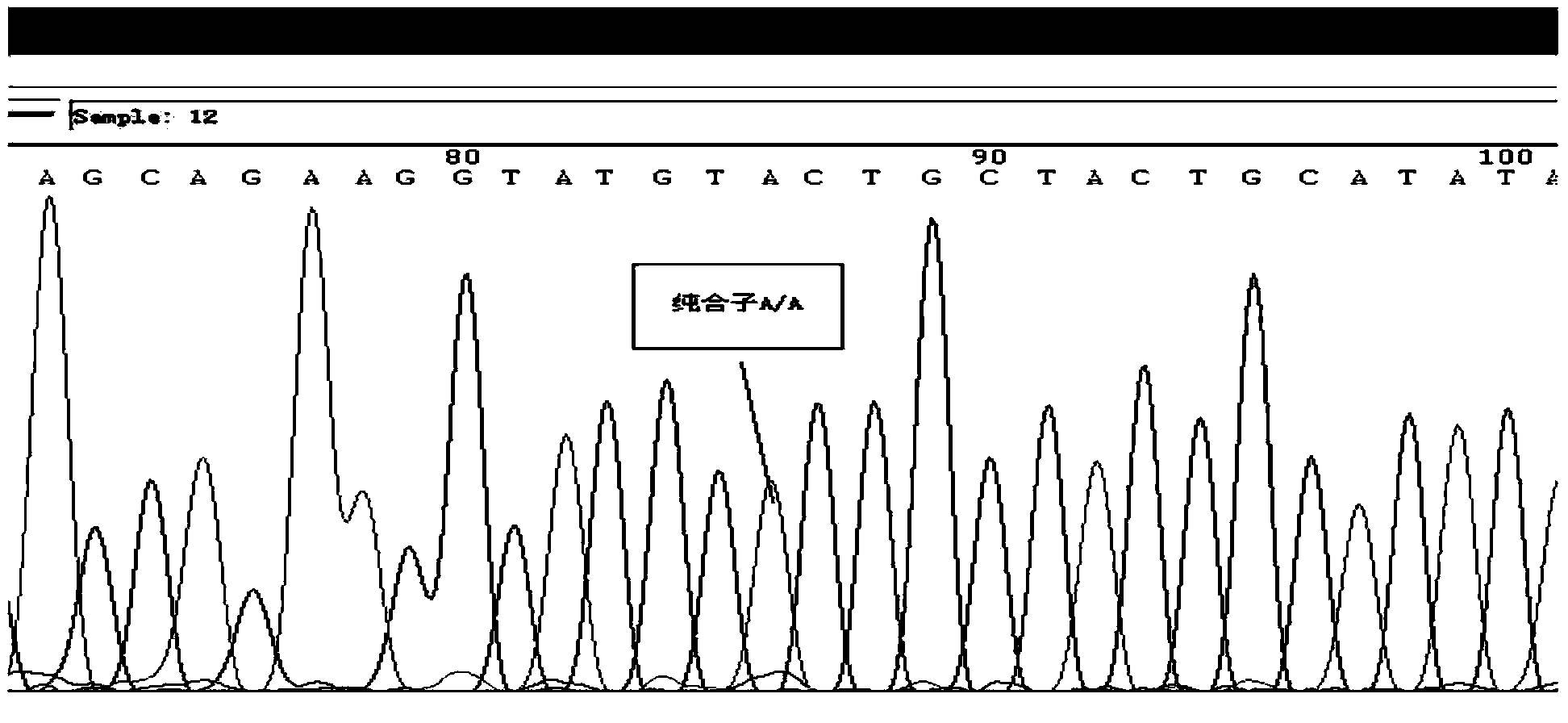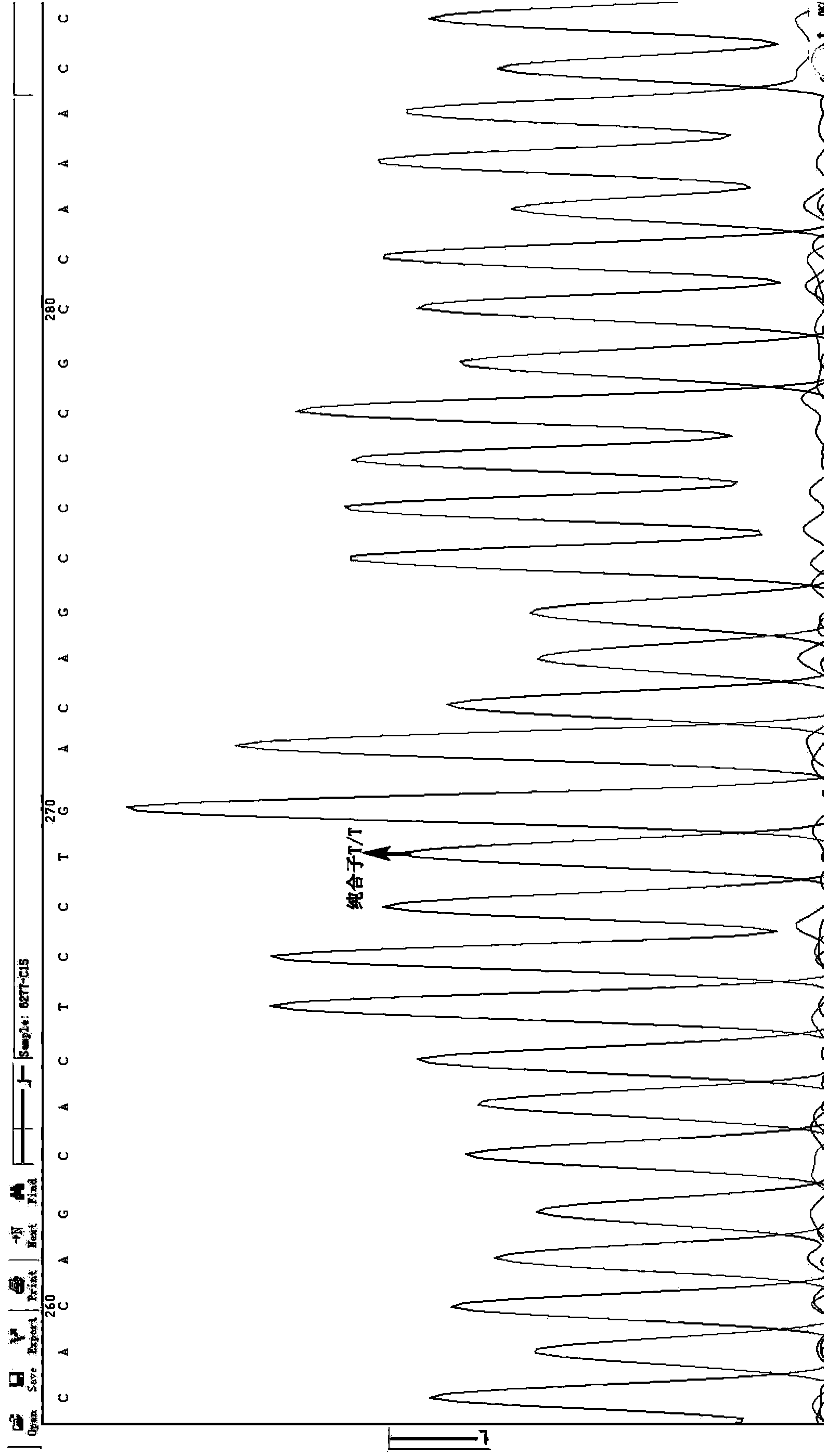Selection, detection and application of catalase gene tagging single nucleotide polymorphic sites
A single nucleotide polymorphism and catalase technology, which is applied in the determination/testing of microorganisms, biochemical equipment and methods, DNA/RNA fragments, etc., can solve the problem of reducing oxygen free radical scavenging effect and noise tolerance drop, no main effects detected, etc.
- Summary
- Abstract
- Description
- Claims
- Application Information
AI Technical Summary
Problems solved by technology
Method used
Image
Examples
Embodiment 1
[0053] Example 1 Selection and detection of CAT gene signature SNP
[0054] 1. CAT gene sequence variation screening
[0055] Use NCBI (www.ncbi.nlm.nih.gov.) GenBank to determine the range of human CAT gene and its upstream and downstream extension regions. Using the latest version of HapMap (http: / / www.hapmap.org) Beijing Han SNP database (Data Rel27a / phaseⅡMar08, on NCBI B36assembly, dbSNP b126), search for the CAT gene and its upstream and downstream extensions of 10kb (ie chr11: 34460472..34493607) in the range of all SNP sites, found a total of 115 SNP sites in the CAT gene of Chinese Han people, of which 44 SNP sites are common SNP sites with an occurrence frequency of more than 10% in the population. This topic selects these 44 SNP loci as the research object.
[0056] In order to accurately select a certain representative tag SNP in a certain gene and facilitate the accurate positioning of its biological significance, according to the distribution of known common ...
Embodiment 2
[0085] Example 2 Correlation between CAT gene signature SNP and noise-induced deafness in Chongqing Han population
[0086] 1. Description of case-control samples
[0087] It consisted of 494 factory workers exposed to noise (including 303 males and 191 females, aged 26-58 years, with an average age of 34.5±5.4 years). Mainly workers from Chongqing Longzhang Paper Co., Ltd., Chuandong Shipyard’s forging workshop, air compressor workshop, electric welding workshop, water production workshop, thermal power plant, power plant, and fertilizer plant of Chongqing Jianfeng Industrial Group Co., Ltd. As the research object, because the workers in these factories have little mobility, and they all work in the same position when they enter the factory. The research subjects were adults with a history of occupational noise exposure, who had been exposed to occupational noise for at least 3 years; those with a history of otitis media and long-term ototoxic drug use were excluded; occup...
Embodiment 3
[0101] Example 3 Reagent test kit
[0102] The present invention also provides a polymorphism kit for in vitro detection of the tag single nucleotide polymorphism site of the CAT gene, the kit comprising:
[0103] 1) Amplify the primers and probe sequences of rs208679, rs10836233, rs2300182, rs769217, rs7104301 and rs7949972 (see Table 2 and Table 3 above for details of primers, probe sequences and corresponding annealing temperatures);
[0104] 2) PCR amplification enzyme and corresponding buffer;
[0105] 3) Reagents for detecting rs208679, rs10836233, rs2300182, rs769217, rs7104301 and rs7949972 sites.
[0106] Table 8 The parameters corresponding to the typing of the 6 SNP sites of the CAT gene
[0107]
[0108]
[0109] Note: A1=Allele 1; A2=Allele 2; P1=Specific Ligation Primer 1; P2=Specific Ligation Primer 2; Pc=Universal Ligation Primer; F1=the fluorescence corresponding to Specific Ligation Primer 1; F2 = Fluorescence corresponding to specific ligation pr...
PUM
 Login to View More
Login to View More Abstract
Description
Claims
Application Information
 Login to View More
Login to View More - R&D
- Intellectual Property
- Life Sciences
- Materials
- Tech Scout
- Unparalleled Data Quality
- Higher Quality Content
- 60% Fewer Hallucinations
Browse by: Latest US Patents, China's latest patents, Technical Efficacy Thesaurus, Application Domain, Technology Topic, Popular Technical Reports.
© 2025 PatSnap. All rights reserved.Legal|Privacy policy|Modern Slavery Act Transparency Statement|Sitemap|About US| Contact US: help@patsnap.com



